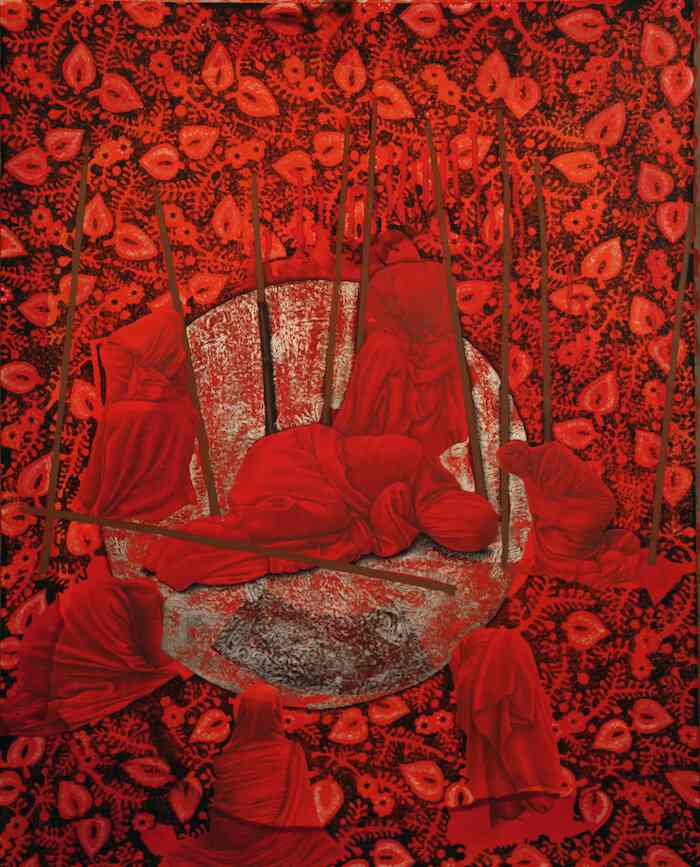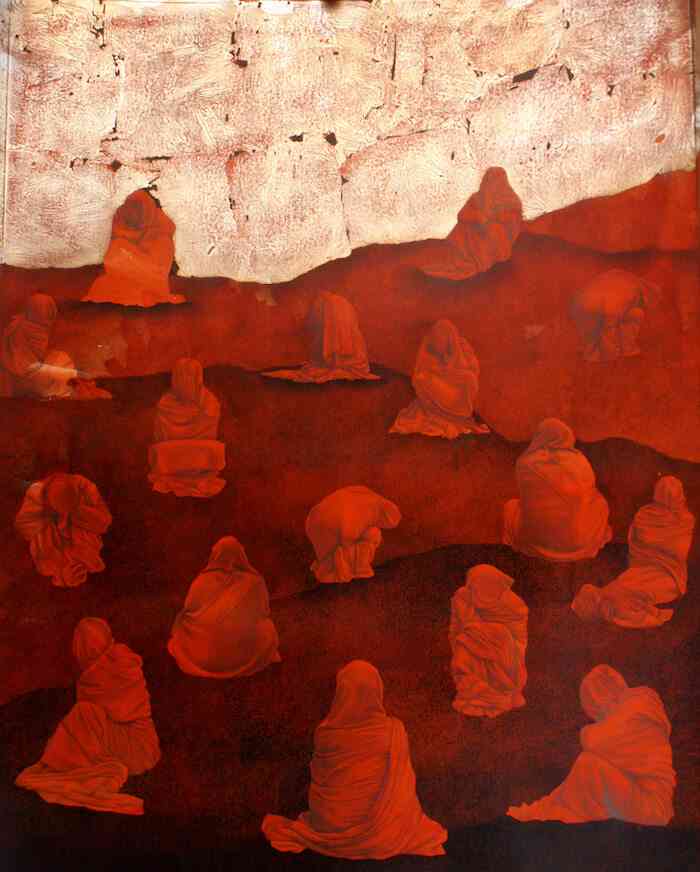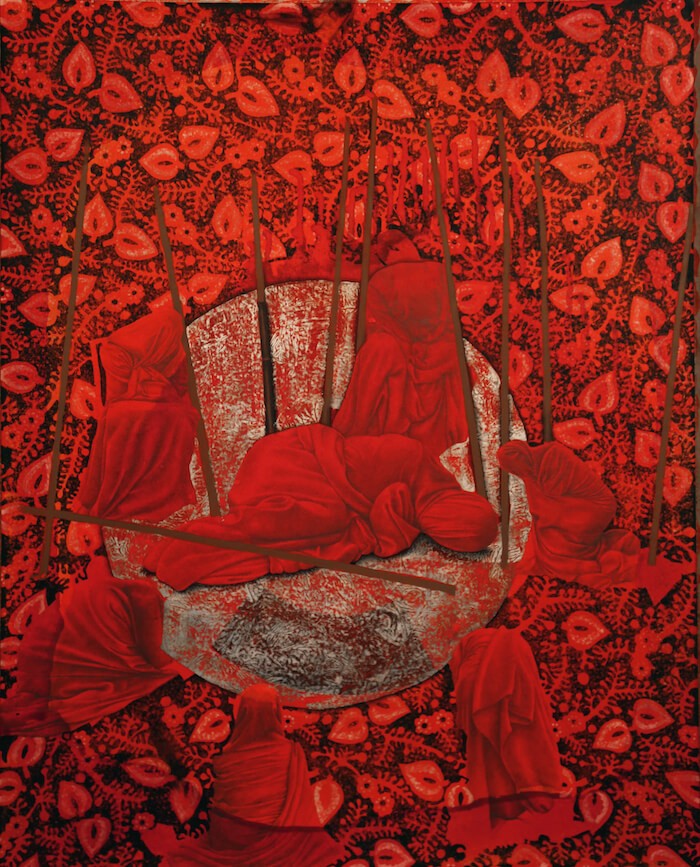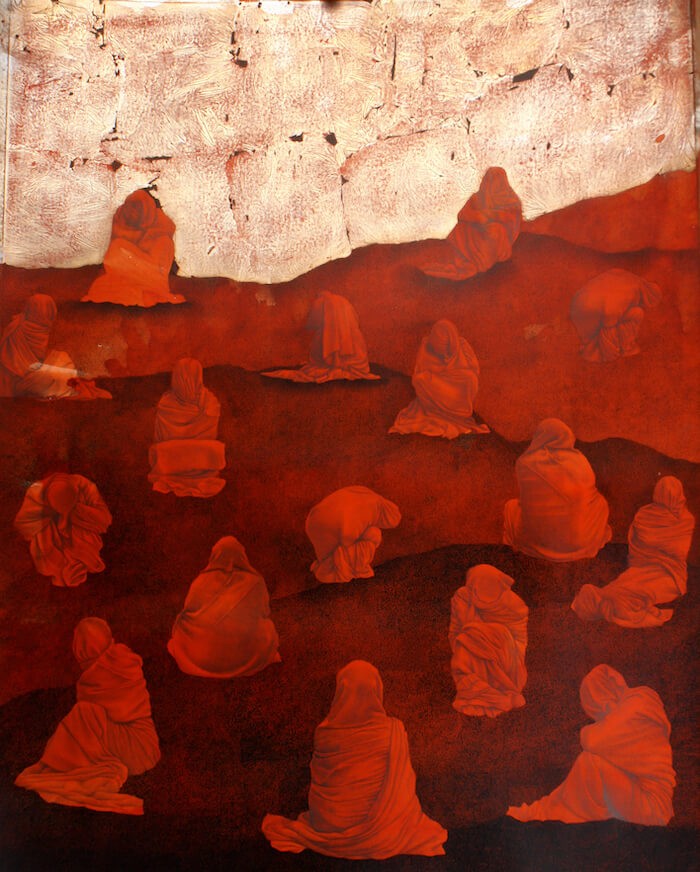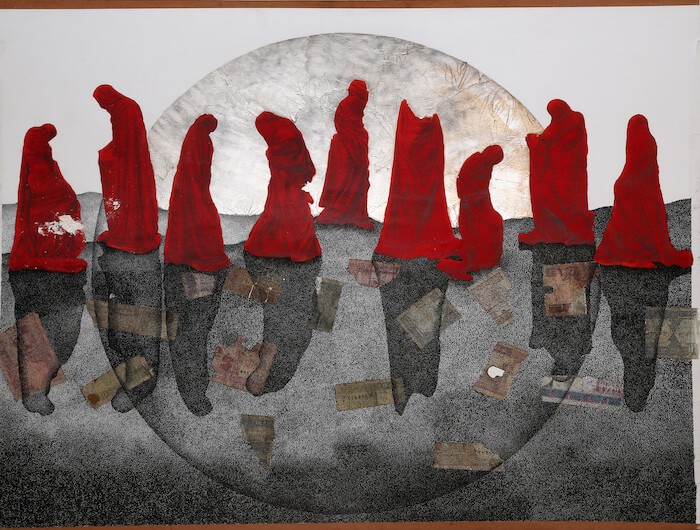Moshin Taasha
Moshin Taasha was born in 1991 in Kabul (AF).
“The artist Moshin Taasha is originally from Kabul and belongs to the Hazara community. The roots of his art lie in the ancient Persian culture while conveying his own perspective on the contemporary world. The Rebirth of the Reds is a series of pictorial and performative cycles that began in 2016 following the suicide bombing in Deh Mazang (Kabul).
The way the site of Deh Mazang was marked by this event and how all senses were shaken by the sight of body fragments and the intense, overpowering smell of blood had a profound impact on the artist. This is a deep wound that reflects itself collectively in the intimacy of a people and, in order to heal, needs to manifest universally.
The artist becomes the narrator of collective stories, the voice of a ‘great number.’ The language with which Moshin Taasha tells his ‘visual stories’ is influenced by classical and traditional pictorial codes, where the geometric patterns of carpets and the decorative aesthetics of Quranic calligraphy form the framework of narrated stories, coagulated into human shapes wrapped in red drapes. We face a subtle indication of humanity that echoes De Chirico, lifeless and motionless puppets, completely depersonalized by the rule of the ‘draper-censor’ imposed by the Taliban regime. These forms come to life only through the dominant, almost obsessive use of crimson, which, personified, becomes the true and only protagonist. The use of this color carries a strong symbolic component: it represents blood, death, and at the same time, love, passion, and life.
In the artist’s mind, nature and his native landscape also assert themselves, yet nothing is enough to dissolve their intimate beauty from the human figures wrapped in vast crimson drapes, like fragile petals of poppies or tulips covering the meadows up to Mazar El Sharif.
With the participation of the theater troupe Sorkh va Safid, the artist brought his paintings to life, staging real performances in the streets of the city and in large rural areas. The pictorial works seem to have sought to break the frame of the two-dimensional medium, acquiring a plasticity in the name of a message aimed at involving more and more people.
The contrast between the snow-covered ground and the orderly passage of these red figures holds a strong symbolic charge. The pristine earth seeps drops of blood, like a deep wound in need of a definitive remedy. The artist is the poet of a tragic contemporaneity in which every cry, every suffering, is a clear and defined element that requires the creation of universal awareness and critical thinking for a better understanding of reality.” - Chiara Ciurlia
Mohsin Taasha was born in 1991 in Kabul. When the Taliban came to power, his family migrated to Pakistan, where they remained until 2004. Upon his return, Ostad Raahi, one of Mohsin’s teachers, opened new perspectives for him: he took lessons with two miniature masters, Khadem Ali and Sher Ali, and studied painting at the Kabul Fine Arts School. He quickly distanced himself from realism and the strict rules of traditional miniature painting. In 2010, he won the Afghanistan Contemporary Prize, participated in dOCUMENTA 13 in 2021, and later studied at Beaconhouse University in Lahore, Pakistan. He has exhibited at the Beirut Contemporary Art Fair (2013) and the 56th Venice Biennale (2015).
